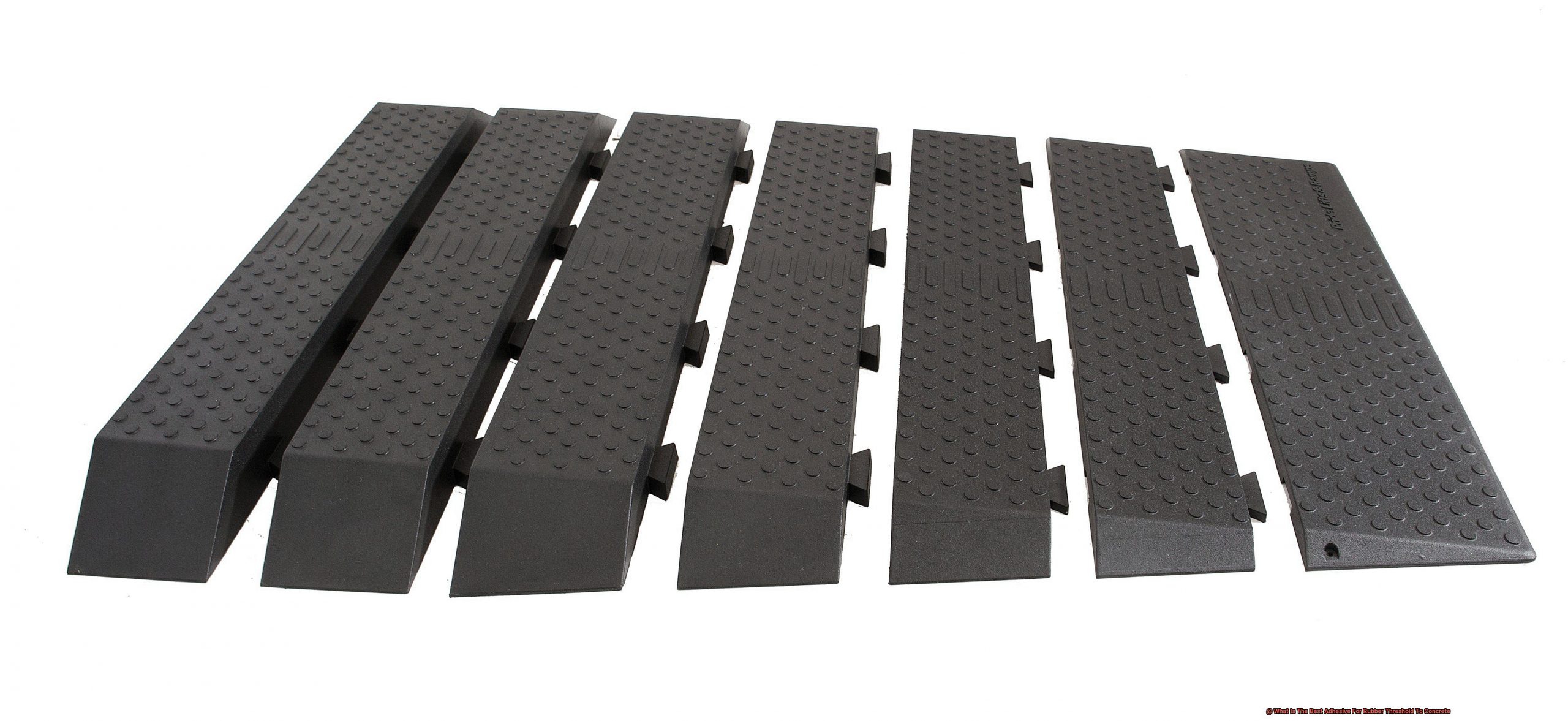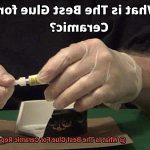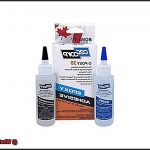Picture this: you enter your home or business, taking those first steps inside without a care in the world. But wait. Have you ever stopped to appreciate the unsung hero that protects your space? Rubber thresholds, my friend, are the unsung heroes of seamless transitions and ultimate protection against moisture, dirt, and pests. However, their effectiveness hinges on one crucial factor – finding the best adhesive that can securely attach rubber thresholds to concrete.
Ever stumbled over a loose or misaligned rubber threshold? It’s enough to drive anyone up the wall. But fear not, for we have uncovered a secret so simple yet mind-blowingly effective that it will leave you wondering why you didn’t discover it sooner. Get ready to become an adhesive application master for rubber thresholds on concrete.
In this blog post, we’re diving headfirst into the captivating world of adhesives to unearth the ultimate solution for flawless bonding. We’ll explore various types of adhesives available in the market, considering factors like durability, flexibility, weather resistance, and ease of application.

But that’s not all. We’ll shine a spotlight on superstar adhesive products that have earned rave reviews from professionals and DIY enthusiasts alike. Armed with this knowledge, you’ll be equipped to make an informed decision and ensure your rubber thresholds stand tall against time.
So buckle up and get ready for an adhesive discovery journey like no other. Let’s unlock the secrets of perfect adhesion together and say goodbye to frustration. Say hello to secure and seamless rubber thresholds on concrete surfaces – because your space deserves nothing but the best.
The Benefits of Epoxy Adhesives for Rubber Thresholds
Contents
- 1 The Benefits of Epoxy Adhesives for Rubber Thresholds
- 2 The Benefits of Polyurethane-Based Adhesives for Rubber Thresholds
- 3 What Adhesives Should Be Avoided for Bonding Rubber to Concrete?
- 4 Preparing the Concrete Surface for Adhesive Application
- 5 Applying the Adhesive Properly
- 6 Using Specialty Tapes for Bonding Rubber to Concrete
- 6.1 Advantages of Specialty Tapes for Bonding Rubber to Concrete:
- 6.2 Tailored Design: When it comes to bonding rubber to concrete, one size does not fit all. That’s where specialty tapes shine. With an array of options available, you can choose a tape specifically designed for your project’s requirements. Whether you need high-strength bonds or superior resistance to moisture or extreme temperatures, there’s a tape perfectly suited to your needs. It’s like having a personalized tool for your bonding masterpiece. Types of Specialty Tapes:
- 6.3 Steps for Using Specialty Tapes:
- 7 Factors to Consider When Selecting an Adhesive
- 8 Consulting with a Professional or Adhesive Manufacturer
- 9 Conclusion
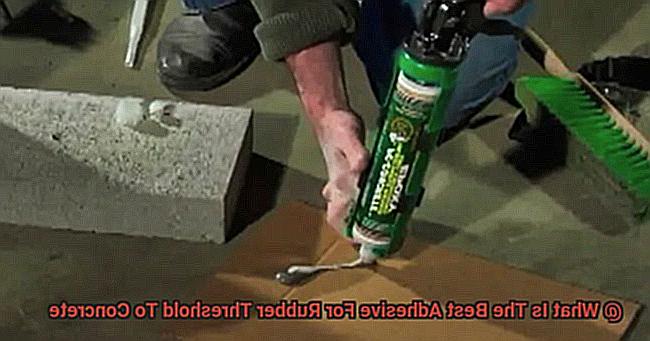
When it comes to securing rubber thresholds to concrete, the choice of adhesive is paramount. It needs to possess unparalleled strength, withstand diverse environmental conditions, and ensure a seamless bond.
Enter epoxy adhesives – the unsung heroes of rubber threshold installation. In this article, we delve into the captivating benefits of using epoxy adhesives for bonding rubber thresholds to concrete, showcasing why they are the ultimate solution for this application.
Unyielding Strength and Durability:
Epoxy adhesives stand tall with their unrivaled strength and durability. They forge an unbreakable bond capable of withstanding heavy foot traffic, guaranteeing that the rubber threshold remains steadfastly attached to the concrete surface. This resilience is particularly crucial for thresholds constantly subjected to pressure and impact.
Chemically Invincible:
Epoxy adhesives boast exceptional resistance to chemicals and solvents, making them the epitome of adaptability in environments rife with such substances. This feature proves invaluable for rubber thresholds in commercial or industrial settings, where cleaning agents or other chemicals often come into contact with the adhesive.
Seamlessness Defined:
One of the remarkable advantages of epoxy adhesives lies in their ability to fill gaps and irregularities between the rubber threshold and the concrete surface. This enchanting attribute creates a smooth, flawless transition that banishes tripping hazards and keeps water infiltration at bay. Moreover, it enhances the overall allure of the threshold, culminating in an aesthetically pleasing finish.
Adhesion Mastery:
Epoxy adhesives reign supreme with their exceptional adhesion properties, ensuring a bond that stands the test of time between the rubber threshold and concrete surface. This mastery in bonding is pivotal for upholding the integrity of the threshold, as any failure in the adhesive bond could lead to loosening or detachment over time.
Conquering Environmental Challenges:
Epoxy adhesives fear no environmental foe. Resilient against temperature fluctuations, moisture, and relentless UV exposure, they emerge as the perfect choice for both indoor and outdoor applications. Come rain or shine, they provide steadfast bonding that endures even in the harshest weather or high humidity areas.
The Benefits of Polyurethane-Based Adhesives for Rubber Thresholds
Rubber thresholds may seem like a small detail, but their proper installation is essential for functionality and aesthetics. The unsung heroes behind the scenes are polyurethane-based adhesives, which provide a range of benefits that ensure a strong and long-lasting bond. In this article, we will delve into the fascinating world of polyurethane-based adhesives and explore why they are the ultimate choice for bonding rubber thresholds to concrete.
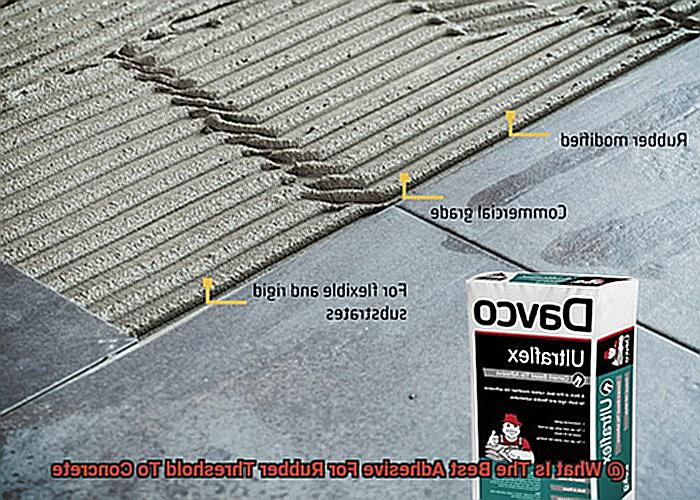
Unyielding Bonding Strength:
Polyurethane-based adhesives possess an extraordinary power – exceptional bonding strength. They create an unbreakable connection between rubber thresholds and concrete surfaces, guaranteeing a secure installation that will withstand the test of time. Say goodbye to worries about thresholds coming loose or shifting.
Flexibility to Withstand Movement:
Rubber thresholds are subjected to constant movement and expansion due to foot traffic and temperature changes. Fortunately, polyurethane-based adhesives are equipped with a unique superpower – high flexibility. They gracefully accommodate these natural movements without cracking or breaking, ensuring a longer lifespan for your rubber thresholds.
Defying Environmental Challenges:
The great outdoors can be harsh, but polyurethane-based adhesives fear no challenge. They possess an uncanny resistance to moisture, temperature changes, and even UV radiation. Come rain or shine, your rubber thresholds will remain steadfastly bonded to the concrete, unyielding against the forces of nature.
Chemical Resistance for Versatility:
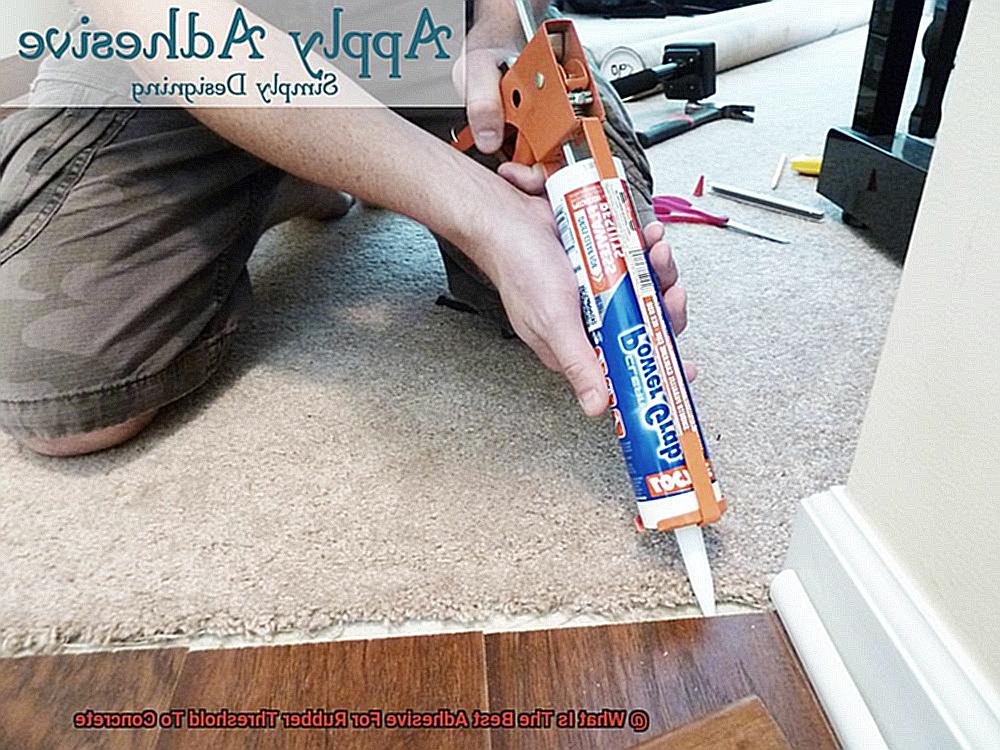
Cleaning agents and solvents are common in various settings, from commercial spaces to industrial environments. Luckily, polyurethane-based adhesives possess an impressive superpower – chemical resistance. They can withstand exposure to these substances without compromising their bond, offering unparalleled versatility in any application.
User-Friendly Application:
Gone are the days of complicated adhesive application processes. Polyurethane-based adhesives come to the rescue with their user-friendly nature. Available in convenient formats such as cartridges or squeeze tubes, they make installation a breeze. Say hello to easy and accurate application without the need for additional tools or equipment.
What Adhesives Should Be Avoided for Bonding Rubber to Concrete?
When it comes to bonding rubber to concrete, selecting the right adhesive is crucial for achieving a durable and reliable bond. However, not all adhesives are suitable for this task. In this article, we will explore the adhesives that should be avoided when bonding rubber to concrete. By understanding which adhesives to steer clear of, you can ensure a successful bonding process and avoid any potential damage or failure.
Solvent-based adhesives:
Solvent-based adhesives may promise a strong bond, but they come with several drawbacks. These adhesives contain volatile organic compounds (VOCs), which can be harmful to human health and the environment. Additionally, they often require proper ventilation during application and have longer drying times. Moreover, they may not bond well with rubber and can lead to damage or deterioration over time. To protect both your health and the integrity of the bond, it’s best to avoid using solvent-based adhesives for rubber-to-concrete applications.
Epoxy adhesives:
Epoxy adhesives are renowned for their impressive bonding properties, but they may not be suitable for bonding rubber to concrete. Their low flexibility makes them ill-equipped to handle the movement and expansion that can occur between rubber and concrete surfaces. Consequently, this lack of flexibility can result in adhesive failure and a weak bond. For a reliable and long-lasting rubber-to-concrete bond, it is advisable to explore alternative adhesive options.
Silicone-based adhesives:
Silicone-based adhesives are often favored for their flexibility and resistance to moisture. However, they may not provide a strong enough bond when it comes to rubber-to-concrete applications. These adhesives typically have low initial tack, meaning they require additional clamping or curing time. Furthermore, they may struggle to adhere well to certain types of rubber or concrete surfaces. To ensure a robust bond between rubber and concrete, it is recommended to opt for adhesives specifically designed for this purpose.
Preparing the Concrete Surface for Adhesive Application
Well, before you dive in, it’s essential to properly prepare that concrete surface for a bond that’s strong and unbreakable. Lucky for you, I’ve got all the expert tips and tricks you need to make sure that surface is ready to stick.
First things first, let’s talk about cleanliness. We’re not talking about just a quick wipe-down here. We want that concrete surface to be absolutely spotless, free from any dirt, dust, or oil that could disrupt the adhesive’s grip. So grab your trusty mild detergent or concrete cleaner and get to work. Scrub that surface with a brush or maybe even unleash the power of a pressure washer if you’re feeling adventurous. And don’t forget to rinse it all off with water, leaving behind nothing but pure, pristine concrete.
But wait, there’s more. Once the surface is clean, it’s time for a thorough inspection. We need to hunt down any cracks, chips, or unevenness lurking within that concrete. These imperfections are sneaky little troublemakers that can weaken the adhesive’s hold. But don’t fret – we’ve got the tools to fix them. Grab some concrete patching compound and fill in those cracks and chips like a pro. And if you stumble upon any uneven areas, fear not. A self-leveling concrete product will come to the rescue, smoothing out those bumps and creating a flawless canvas for adhesion.
Now that we’ve taken care of the repairs, it’s time to roughen things up a bit. Yes, you heard me right – roughening the surface is actually a good thing when it comes to adhesion. There are a couple of ways you can go about this step. You can choose the mechanical route and use sanding or grinding tools to create texture on the surface. Or if you’re feeling bold and want to embrace a touch of chemical magic, an acid etching solution can be your secret weapon. Just remember to follow the instructions provided by the manufacturer, whichever method you choose.
Once we’ve roughened things up, it’s time for a final clean sweep. We don’t want any pesky dust or debris getting in the way of a perfect bond. So grab that broom or vacuum cleaner and eliminate any loose particles that dare to linger on the surface. We want it smooth and ready for action.
Applying the Adhesive Properly
Today, we embark on an exciting journey into the world of adhesive application. Whether you’re revamping your living space or unleashing your creative genius, knowing how to apply adhesive properly is the secret ingredient for success. In this comprehensive guide, we uncover the secrets to achieving a bond that surpasses expectations when bonding rubber thresholds to concrete surfaces. So grab your tools and prepare to become a master in the art of adhesive application.
Step 1: A Clean Canvas for Perfection
To kickstart our adhesive adventure, cleanliness takes center stage. Bid farewell to dirt, dust, and debris by employing the power of a mild detergent and water solution. Thoroughly clean both the rubber threshold and the concrete surface, ensuring not a speck remains. Patience is key at this stage – allow them to dry completely before moving on. Remember, a flawless canvas paves the way for flawless adhesion.
Step 2: Primer – The Secret Weapon
Once cleanliness reigns supreme, it’s time to unveil our secret weapon – primer. By applying primer to both the rubber threshold and concrete surface, we elevate adhesion to new heights. Don’t forget to consult the manufacturer’s instructions for optimal application techniques. Allow the primer to dry thoroughly before proceeding – patience yields perfection.
Step 3: Unleash Your Adhesive Expertise
Now, it’s time for the main act – adhesive application. But before we dive in headfirst, take a moment to familiarize yourself with the manufacturer’s specific instructions for your chosen adhesive. Each adhesive has its own unique requirements; knowledge is power.
Armed with a notched trowel or brush, it’s time to work your magic. Take your time, applying the adhesive evenly across both surfaces. Ensure complete coverage, leaving no room for imperfections. Remember, attention to detail is the key to a masterpiece.
Step 4: The Tackiness Factor
With adhesive applied, patience becomes our ally once again. Allow the adhesive a few minutes to work its magic and become delightfully tacky. During this time, double-check the alignment of your rubber threshold, ensuring the perfect setup for maximum adhesion success.
Using Specialty Tapes for Bonding Rubber to Concrete
Prepare to embark on a thrilling adhesive adventure as we delve into the world of specialty tapes for bonding rubber to concrete surfaces. Get ready to elevate your adhesive game with these innovative tapes that offer convenience, tailored design, and exceptional bonding capabilities. Let’s explore the secrets behind achieving bonds that will leave others in awe.
Advantages of Specialty Tapes for Bonding Rubber to Concrete:
Ease of Use:
Bid farewell to the hassles of mixing and curing time that come with traditional adhesives. Specialty tapes allow you to skip these steps entirely. Simply apply the tape directly onto the surfaces, and voila. Instant bonding magic at your fingertips. Experience the convenience of quick and efficient installations like never before.

